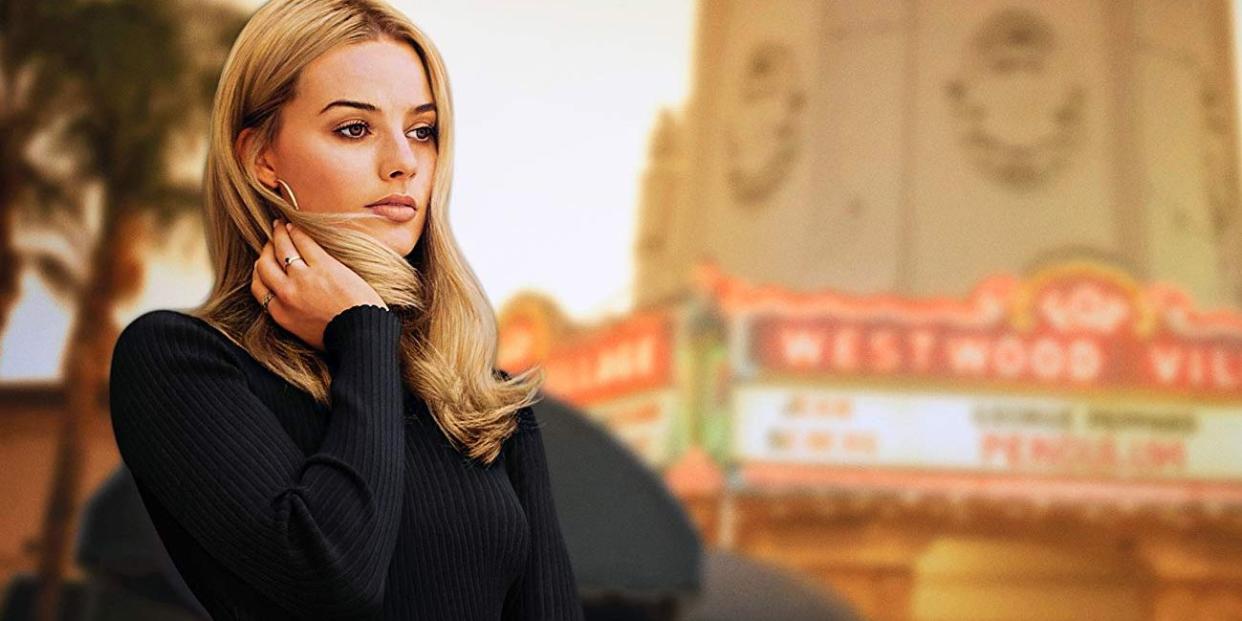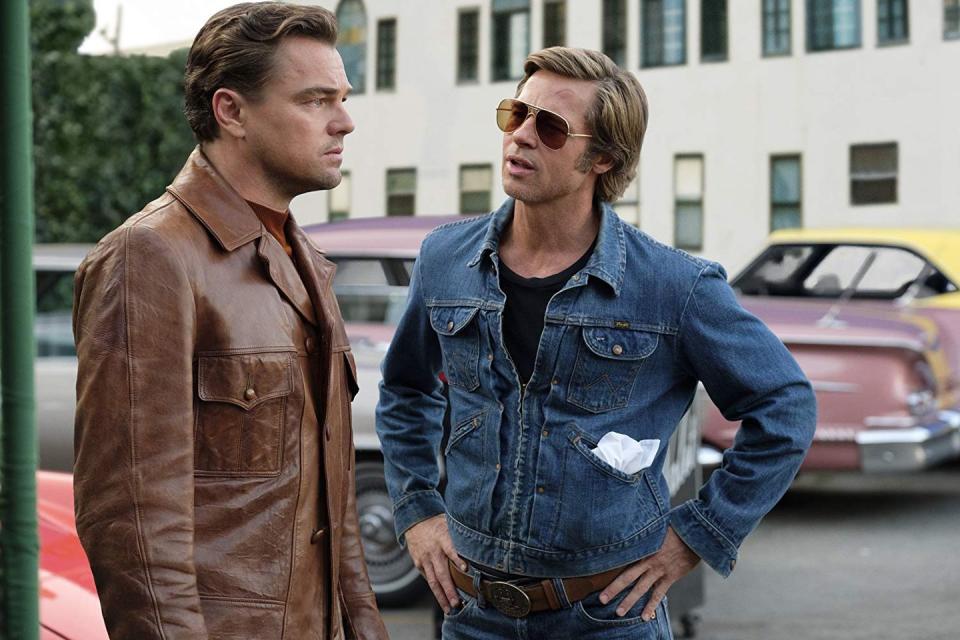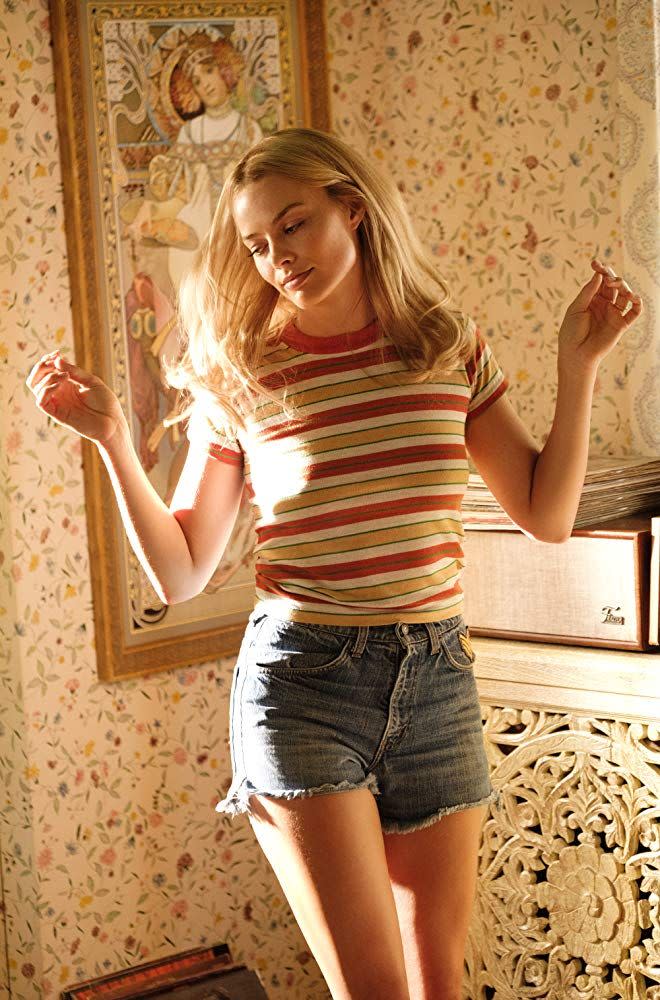Let's Talk About the Ending of 'Once Upon a Time in Hollywood'

Warning: Contains spoilers for Once Upon a Time in Hollywood.
If you have not yet seen Quentin Tarantino's Once Upon a Time in Hollywood, you should absolutely not read any further. (You should also try to see it before Sunday, since it's nominated for 10 Oscars at this weekend's ceremony.) But really, turn back now while you still can, because the less you know about the specifics of this heavily fictionalized inspired-by-true-events rollercoaster ride, the better. You have been warned.
At once dreamy and grimy, Tarantino's love letter to his industry is grounded in a 1960s Hollywood that feels entirely authentic, and is populated by a lot of real people, from Steve McQueen (Damian Lewis) to Bruce Lee (Mike Moh) and, of course, Margot Robbie's Sharon Tate. But its two lead characters—struggling TV actor Rick Dalton (Leonardo DiCaprio), and his stuntman/chauffeur/right-hand man Cliff Booth (Brad Pitt, who is likely bagging his first acting Oscar on Sunday)—are fictional, and its final act dovetails into a twist that puts it firmly in the category of revisionist history.

This is nothing new for Tarantino. Summer 2019 marked ten years since the release of his Inglorious Basterds, a World War II epic that ends with the successful assassination of Adolf Hitler—this was the first film in what Tarantino has since referred to as a "revisionist history trilogy". The second was Django Unchained, which ended with an enslaved man taking violent revenge on his captors. Though Tarantino hasn't explicitly said so, Once Upon a Time feels like the third movie in that trilogy, turning the tables on Charles Manson and his cult just as Basterds and Django did on Nazis and slave owners, transforming an unspeakably awful historical truth into a cathartic revenge story.
Most people are at least passingly familiar with the horrific 1969 mass murder that took place at 10050 Cielo Drive, the Benedict Canyon mansion Tate shared with her husband Roman Polanski (Rafal Zawierucha), which features heavily in the film because DiCaprio's character lives next door. In brief, four members of the Manson family arrived at the house late at night on August 8, 1969, under instructions to kill everyone inside. (Manson held a grudge against a former occupant of the house, record producer Terry Melcher.) Tate, her friends Jay Sebring, Wojciech Frykowsk, and Abigail Folger, and a visitor to the house, Steven Parent, were all killed, along with Tate's unborn baby. (If you want a nuanced and detailed retelling of the murders and their broader context, look no further than the You Must Remember This podcast.)
A palpable sense of menace builds through the second act of the film, starting from a chilling sequence in which Cliff pays a visit to the decrepit ranch where Manson and his acolytes are holed up. The dread keeps mounting as August of 1969 rolls around, and Polanski boards a flight to London, where he was when the murders happened. By the time Sharon and her friends go to dinner at El Coyote, the real Mexican restaurant in Hollywood where the group ate on the evening of their murder, the tension is almost unbearable.

But the moment the Manson four—Sadie (Mikey Madison), Katie (Madisen Beaty), Tex (Austin Butler), and Linda (Maya Hawke)—arrive at Cielo Drive, the film takes a hard left turn into gleeful fiction. After being accosted in the street by a drunk and belligerent Rick, the gang recognizes him from his role in a beloved TV show and decides to slaughter him instead, reasoning that pop culture is to blame for teaching them violence in the first place. Inside Rick's house they encounter Cliff, who's high as a kite on an acid-dipped cigarette yet still very much capable of defending himself, and Rick, who's no fighter but happens to have a flamethrower on hand. And so the Manson family members meet their demises in a variety of inventively vicious ways, their endings just as gruesome and dehumanizing as the ones they dispensed in real life, while Sharon and her friends are safe and oblivious next door.
Critics have noted that Once Upon a Time strikes a more tender and heartfelt note than many expect from Tarantino—in the L.A. Times, Kenneth Turan called the film "distinctly elegiac and unexpectedly emotional," which is never more true than in its final scene, where Tate is given a gentle kind of fairytale ending. Despite Robbie's much-discussed lack of dialogue, Sharon is a significant and potent presence in the film, often alone on camera in quiet moments that give her a real inner life.
“I thought it would both be touching and pleasurable and also sad and melancholy to just spend a little time with her, just existing,” Tarantino told Deadline. “A day in the life, driving around, running errands, doing this, doing that, and just being with her. I thought that could be special and meaningful. I wanted you to see Sharon a lot, see her living life. Not following some story, just see her living, see her being.” And in the alternate universe of the movie, she gets to keep on being.
Watch Once Upon a Time in Hollywood now
You Might Also Like

